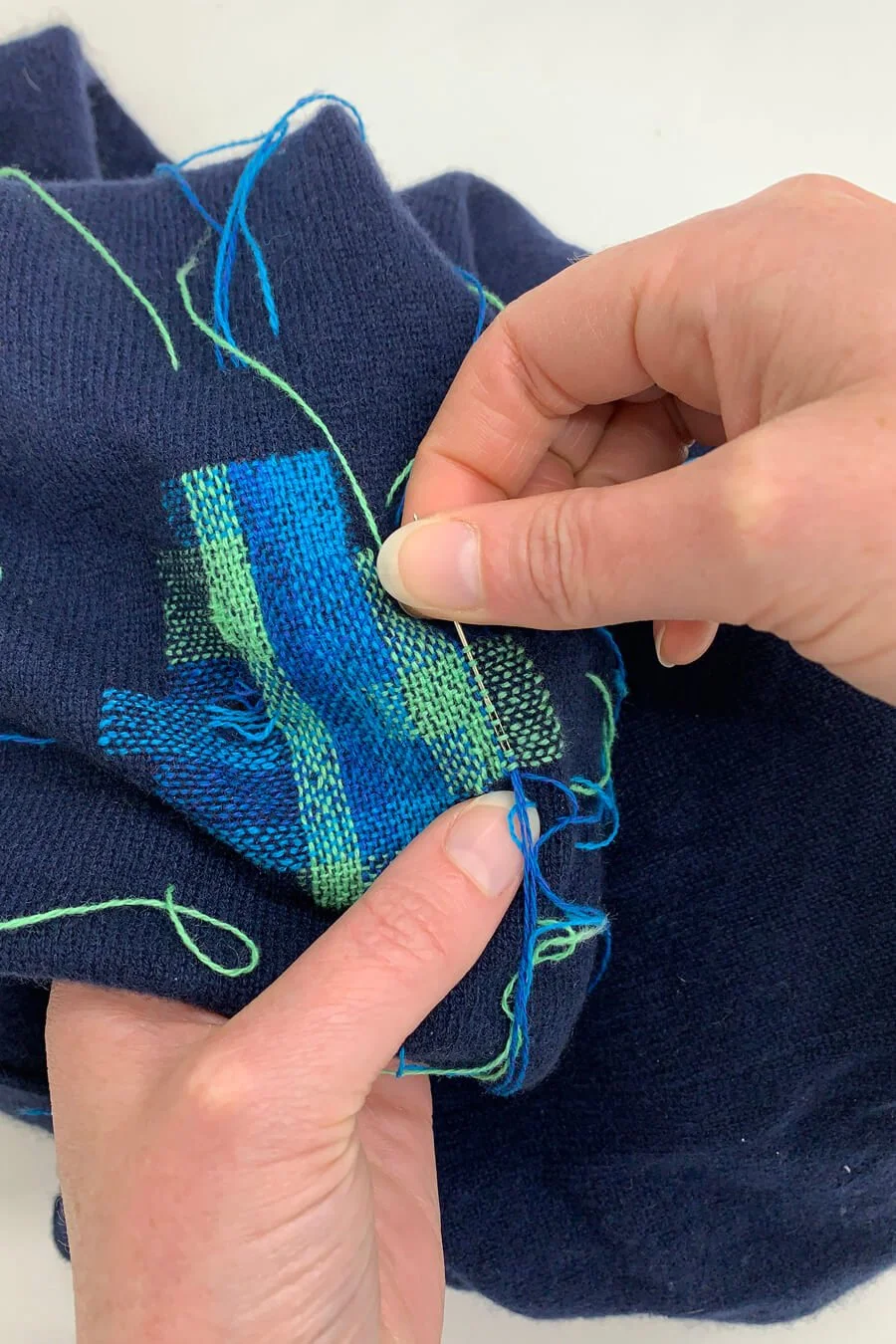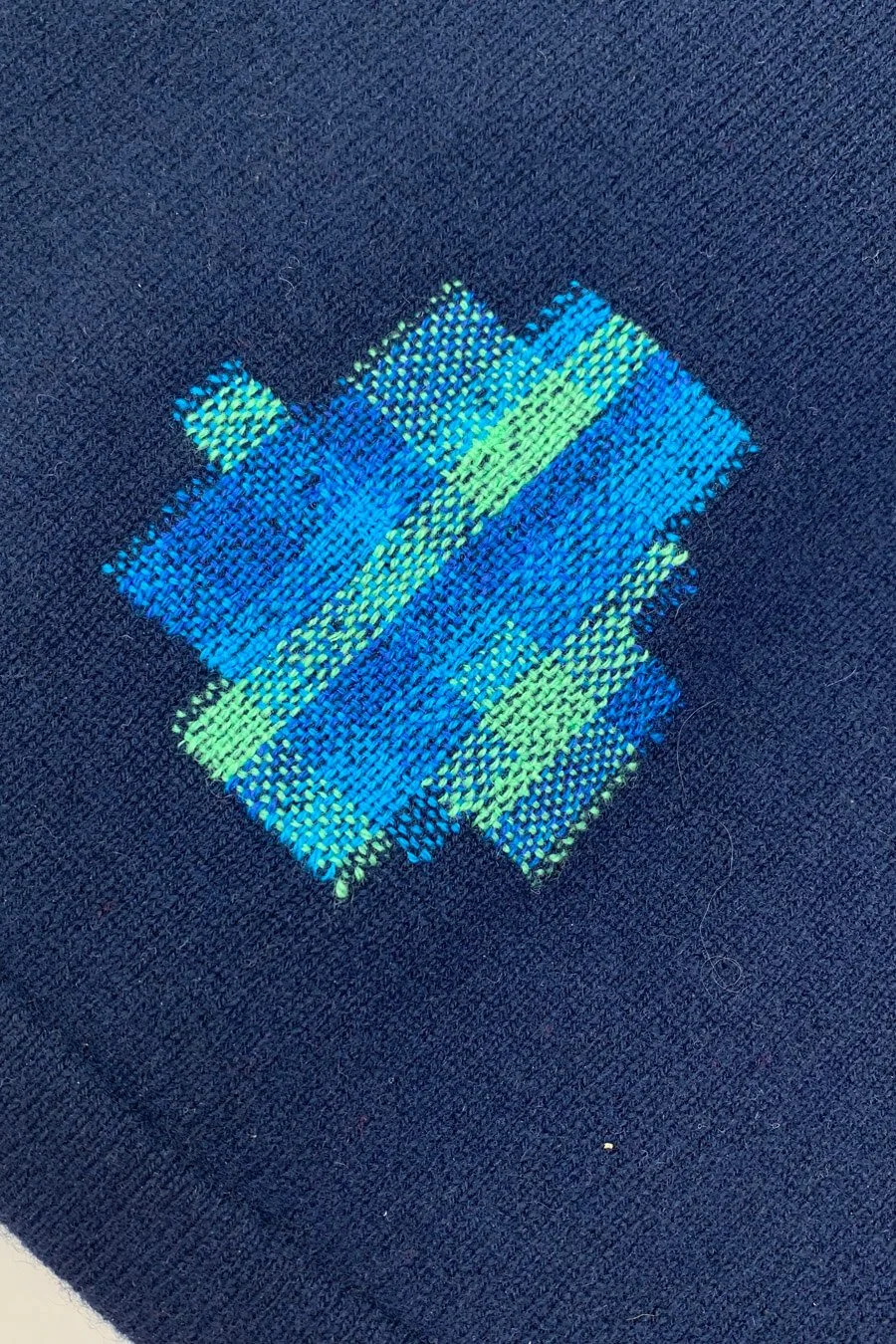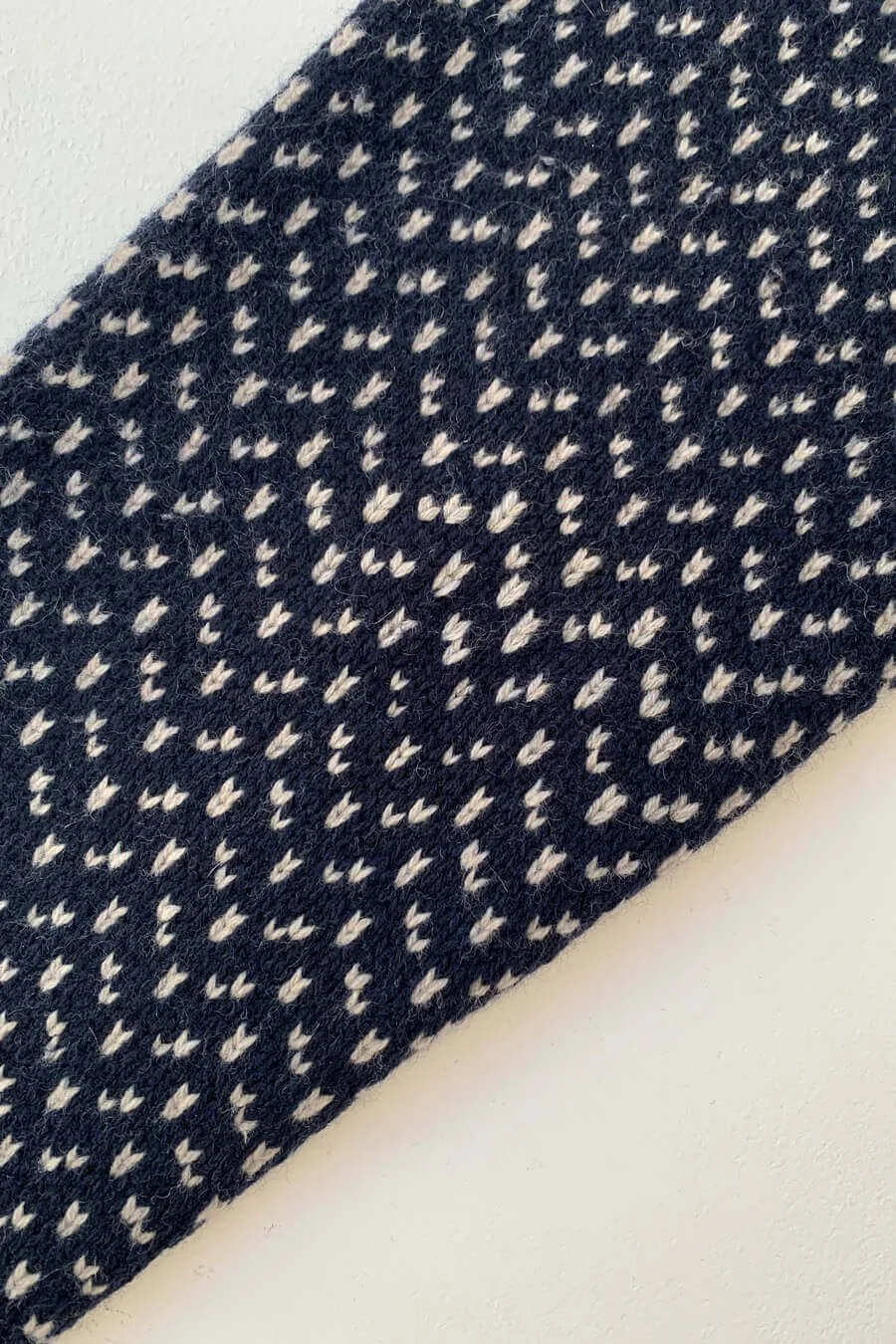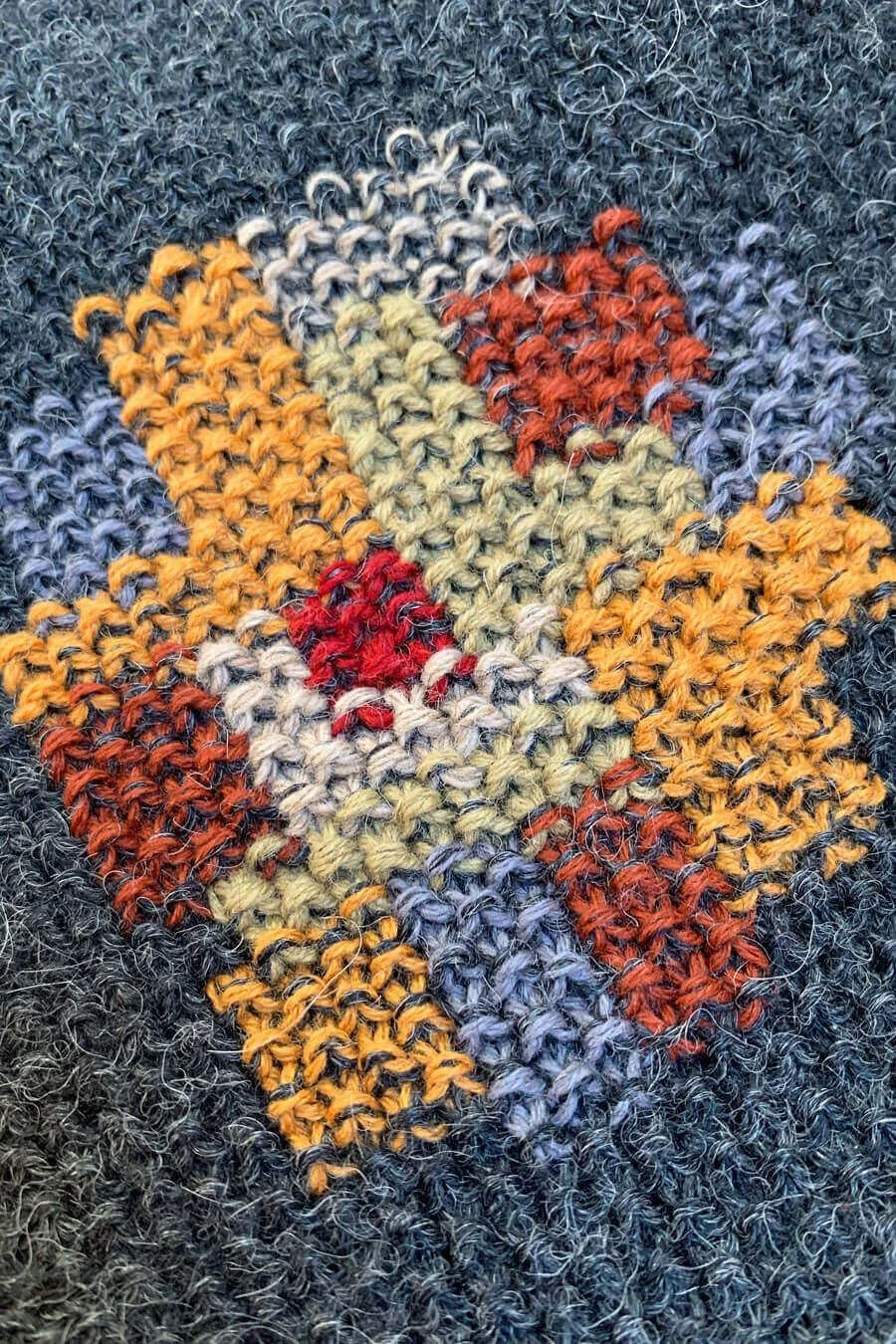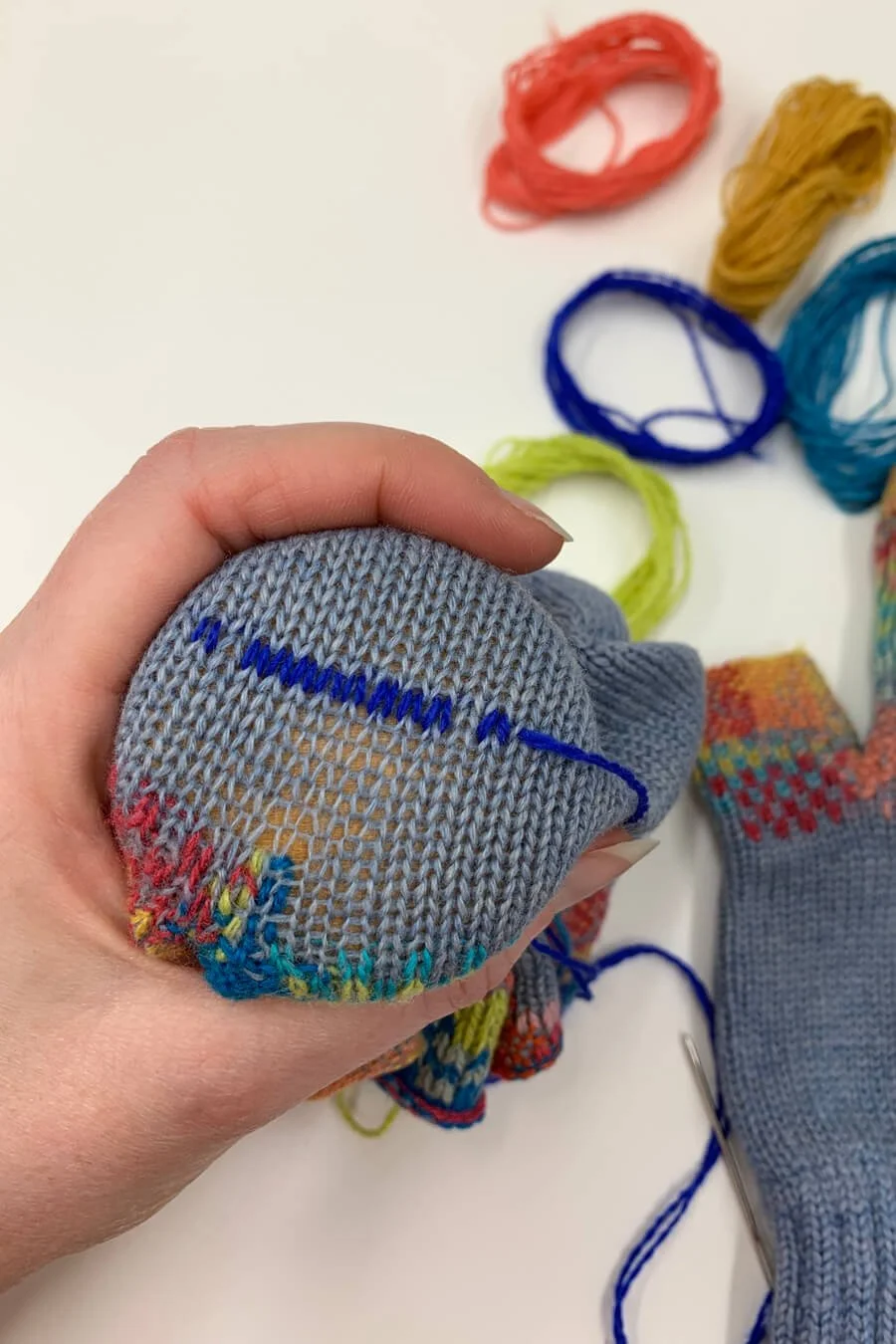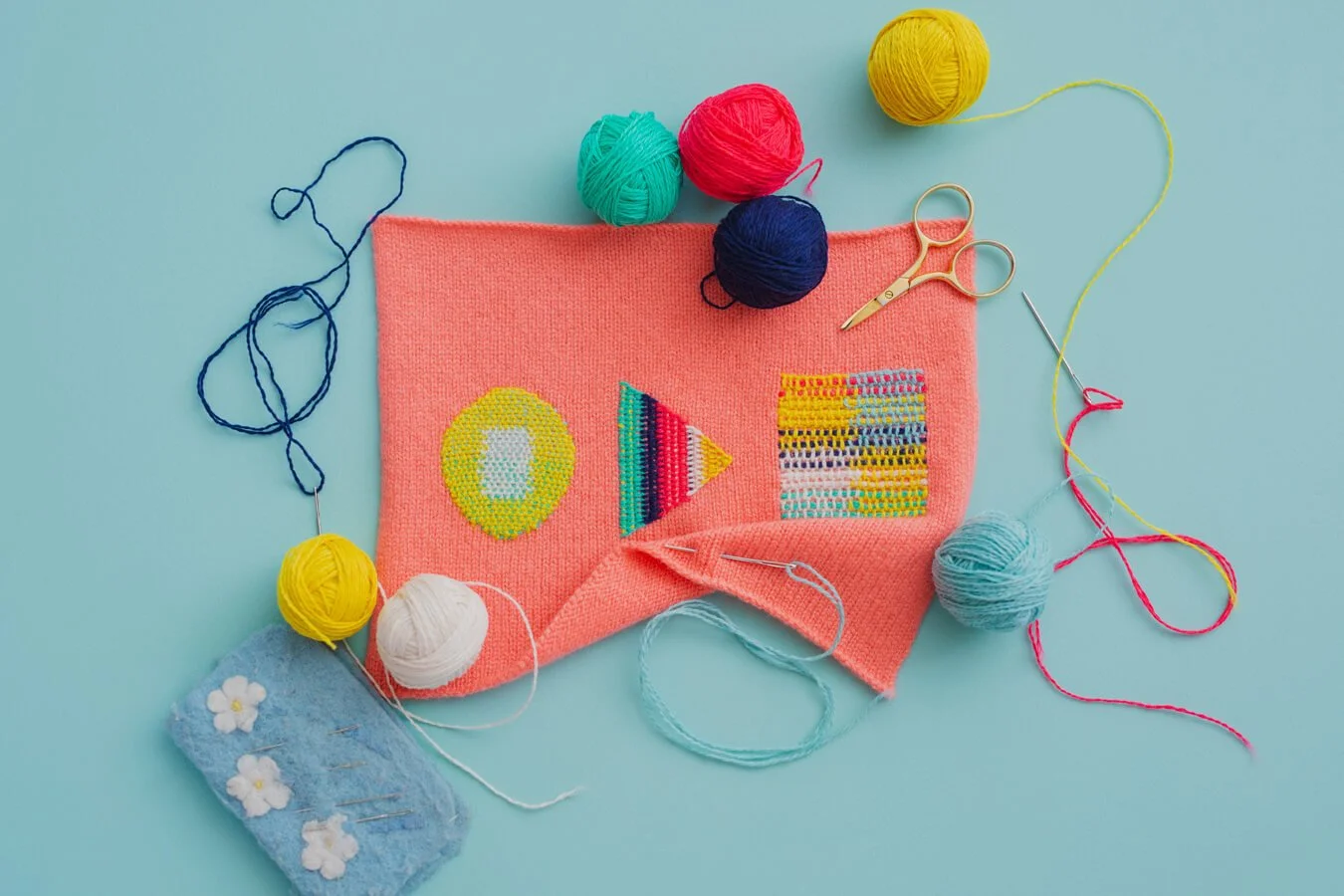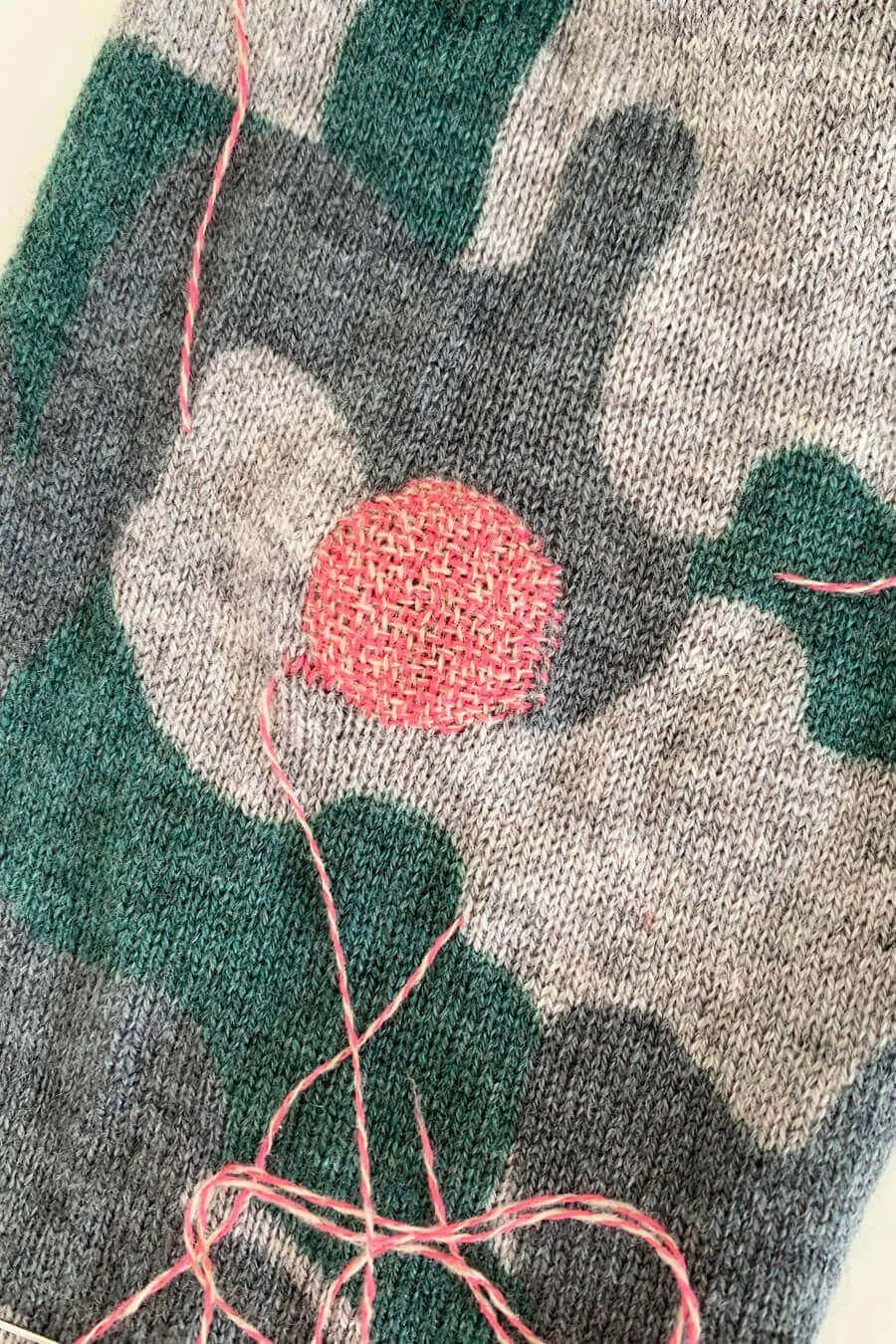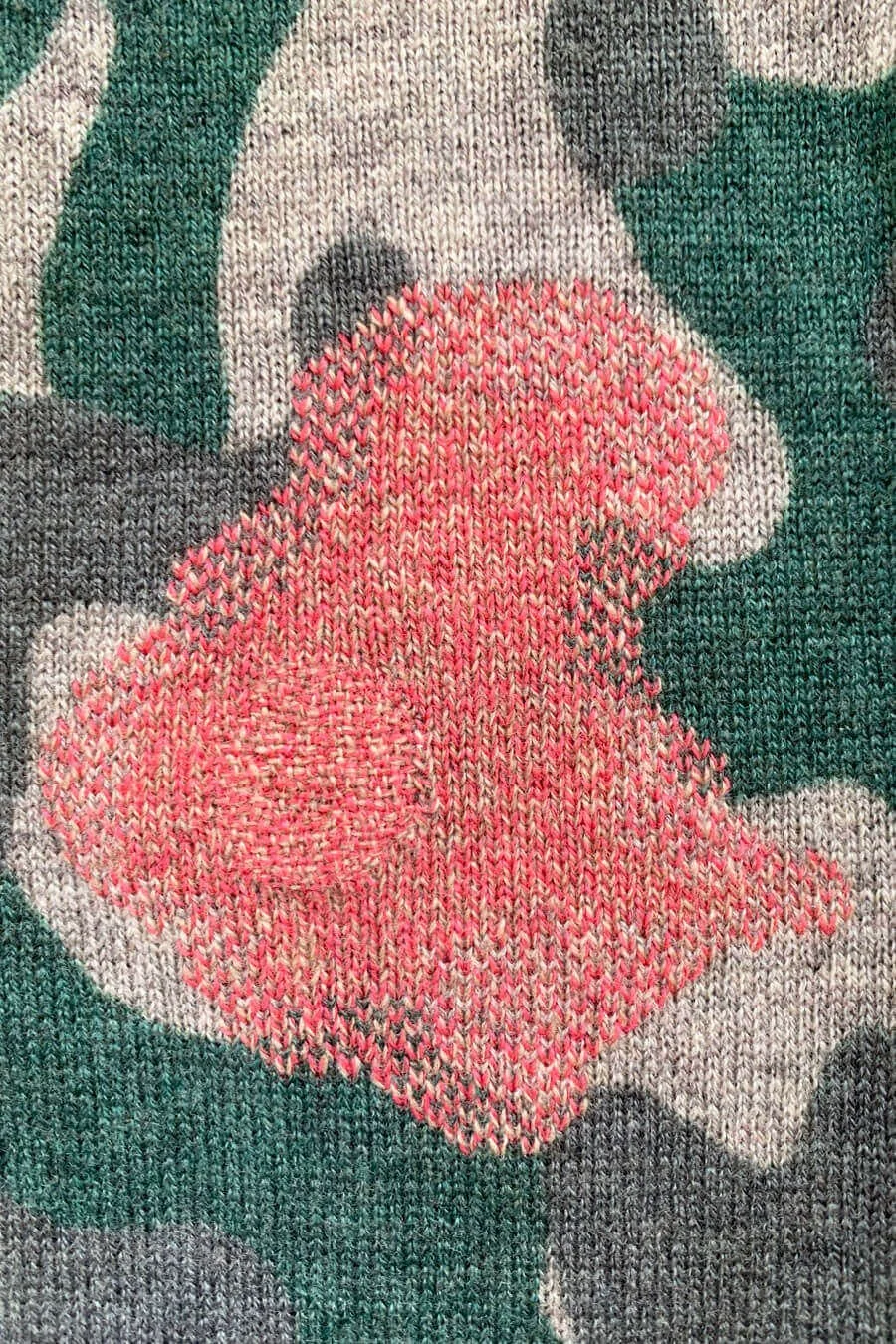Different Types of Darning
When you’re learning to mend your clothes, there are different types of darning stitches you can use. These mending techniques all have the word darning in their names, but they’re quite different, and can be suited to different types of damage.
Types of Darning Stitches:
Darning
Darning is the term used for a woven repair, where threads are woven across the fabric vertically and horizontally.
I love darning for many reasons. It’s versatile, and can be used on most fabrics, and while I mostly repair knitwear, I’ve used it to repair jeans and dresses, and have seen it used on shoes and furniture!
Darning can be worked from the front or back of the fabric, and can be any shape you want. You can make it highly stylised, or very discreet. There are so many ways you can vary your darning, just by changing colours, shapes, and even by adding patterns. I think just by changing colours in different ways, you could only use darning as your mending technique and keep it constantly interesting and creative.
It’s important to remember that darning is not stretchy, and to keep this in mind when mending knitwear, as knitwear does have stretch. That doesn’t mean you shouldn’t use it on knitwear as it’s still really great, just be careful in areas that need to stretch.
Darning also isn’t the best technique for reinforcing threadbare areas in knitwear because of the lack in stretch, but it is great for reinforcing thinning areas on woven fabrics.
For repairing knitwear, darning won’t ever by 100% invisible, although if you’re using the right matching yarn, you can create a repair that’s very close of being invisible.
What equipment do you need for darning?
You don’t need much equipment for darning: just your needle and some yarn. Darning mushrooms/ darning disks/ darning eggs are optional, and personally I prefer to work without them.
I would recommend using a tapestry needle when darning on knitwear, but i tend to use a sharp pointed needle if I’m darning something like jeans.
You’ll also need a small sharp pair of scissors, but you need these for just about any craft!
When should you use darning for mending your clothes?
Choose to use darning for repairing small moth holes, large elbow holes, holes under the arm, and mending fine knits like merino base layers. You can also use darning for mending holes at an edge- for example on a worn cuff.
Darning is a great type of mending stitch, and I highly recommend playing around with it to find effects you like. It’s great for blending colours, and for creating tartan and tweedy effects within your mends, as well as ginghams and check patterns. As well as step by step instruction for darning itsself, I also include a chapter on darning patterns in my book ‘Visible Creative Mending for Knitwear”.
Swiss Darning
The next type of darning is swiss darning, also known as duplicate stitch. It’s not at all similar to darning, as it’s a knitwear specific mending technique and mimics the knitted fabric.
The benefits of using swiss darning for repairing knitwear
Swiss darning is the best type of darning stitch for areas of knitwear where you do want some stretch, or if you want a truly invisible repair. It’s also the best type of darning to use for threadbare areas of knitwear that need reinforcement, and I use it a lot for areas like elbows. It's also perfect for mending tiny holes in knits, which doesn’t require any extra thread and is very straightforward.
If you have a textured knitted sweater then swiss darning is the perfect technique for repairing it while keeping the texture. It adds another layer of complexity, depending on the structure, but it’s a great challenge! This is something I’ve recently started teaching in an online workshop, focusing on repairing textured knits using swiss darning, where we look at repairing ribs, garter stitch and moss stitch.
What I love about swiss darning is that it can also be very creative. You can use it to add pattern, lettering, colour blocks or whatever you like. This makes it great for customising sweaters you might feel tired of, as well as a great option for repair.
What equipment do you need for swiss darning?
You can use swiss darning for repairing holes in knitwear, but it’s arguably a bit more complicated than repairing them with darning. You need sewing thread or pins as well as your yarn and scissors for reconstructing fabric/ mending holes.
Using a darning mushroom can help for projects that are otherwise difficult to hold- like socks or gloves, and sometimes just for any fine knit fabric.
Personally, I prefer to use swiss darning for repairing fairly small holes in mid to heavy weight knits, as I don’t enjoy reconstructing holes on very fine fabrics unless I’m in the right mood!
Swiss darning isn’t as useful for mending holes at an edge, but it can use used for mending 1x1 ribs if they have worn edges.
When should you use swiss darning to repair your knitwear?
Choose to use swiss darning for repairing small moth holes, smaller elbow holes, reinforcing elbows and socks and any threadbare areas, catching worn areas before they become holes, and for customising sweaters and adding pattern. Use swiss darning on textured knits to keep the texture.
Scotch Darning
Scotch darning is another type of darning, and completely different to the others. It uses interconnecting rows of blanket stitch, worked around threads. Visually the texture can look very similar to darning, but the construction is different.
Like darning, Scotch darning isn’t stretchy. It’s quite robust, and is thicker than darning. This could make it feel bulky, but it could also be ideal for areas that get a lot of wear.
I think it’s a great method for mending worn cuffs and edges, as it naturally gives you a very clean edge.
If you leave out the base threads and just use blanket stitch it can be stretchy, although that makes it looser.
It’s another interesting mending technique for playing with colour- the base threads show through so you can make them contrasting on the same with different effects. You can also create blocks of colour, so there’s plenty of creativity opportunities to explore.
However, I personally don’t actually use this type of darning very often, but maybe that’s just because I haven’t found the right project for it yet!
Choose scotch darning for repairing worn edges. All you need is some yarn, a needle and a pair of scissors.
Which type of darning technique is best for beginners?
If you’re new to mending, then deciding which type of darning stitch to learn first may seem a bit confusing! All these mending techniques are shown with step-by-step instructions in my book “Visible Creative Mending for Knitwear”, which is a great place to start if you’d like to learn them all.
If you’re a beginner, I would start with darning (the woven kind), because it’s so versatile and you’ll be able to use it to repair different garments and get different aesthetics with it. Once you master darning, you can be really creative with it, and you may find you don’t feel the need for anything else.
If you’d like an in-depth tutorial to help you learn, then my Introduction to Darning Workshop is ideal. It’s a learn in your own time tutorial (although I do run live workshops too), where you will learn two different approaches to darning, as well as a couple of patterns you can add in if you’d like to.
I would also recommend learning swiss darning for mending knitwear. It’s really helpful for mending knitwear, and although you can manage with just darning, swiss darning is really a must have skill.
In my own mending, I often combine darning and swiss darning in a repair, often choosing to darn a hole and then swiss darning around it.
For being creative and having choices to fit your inspiration and ideas, learn both darning and swiss darning.
